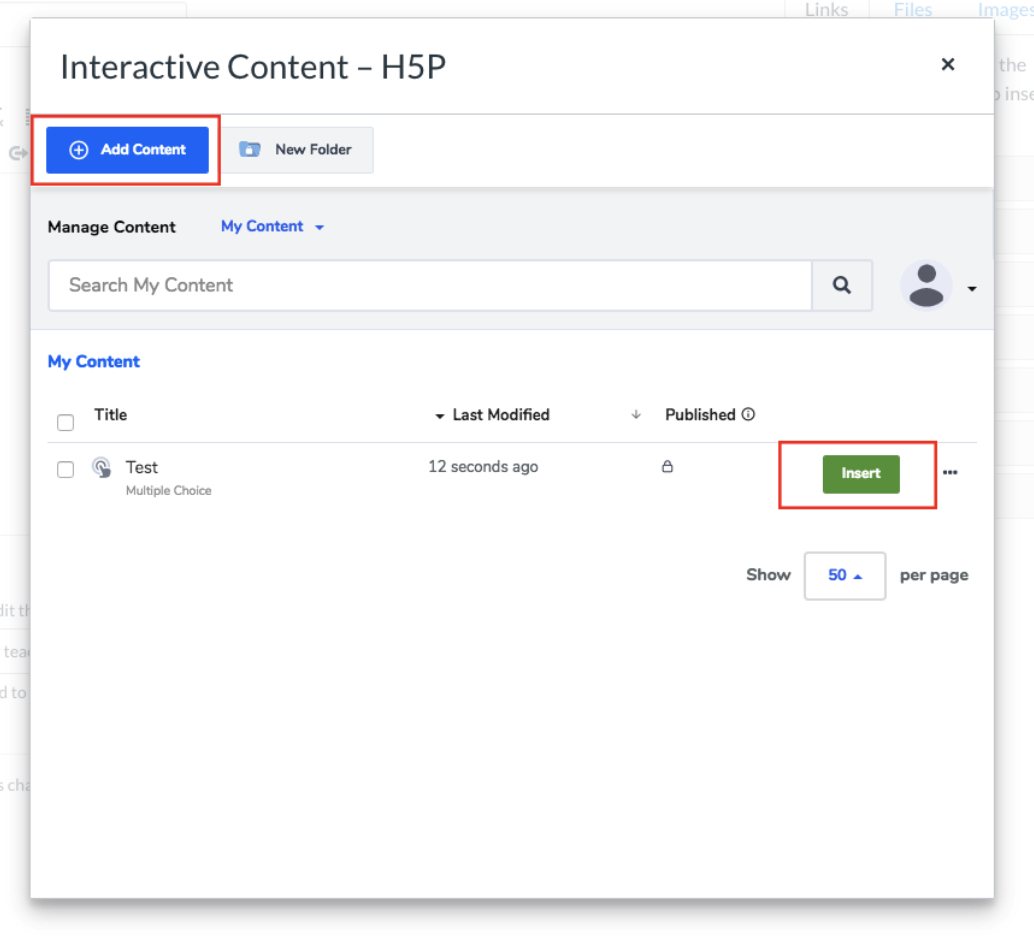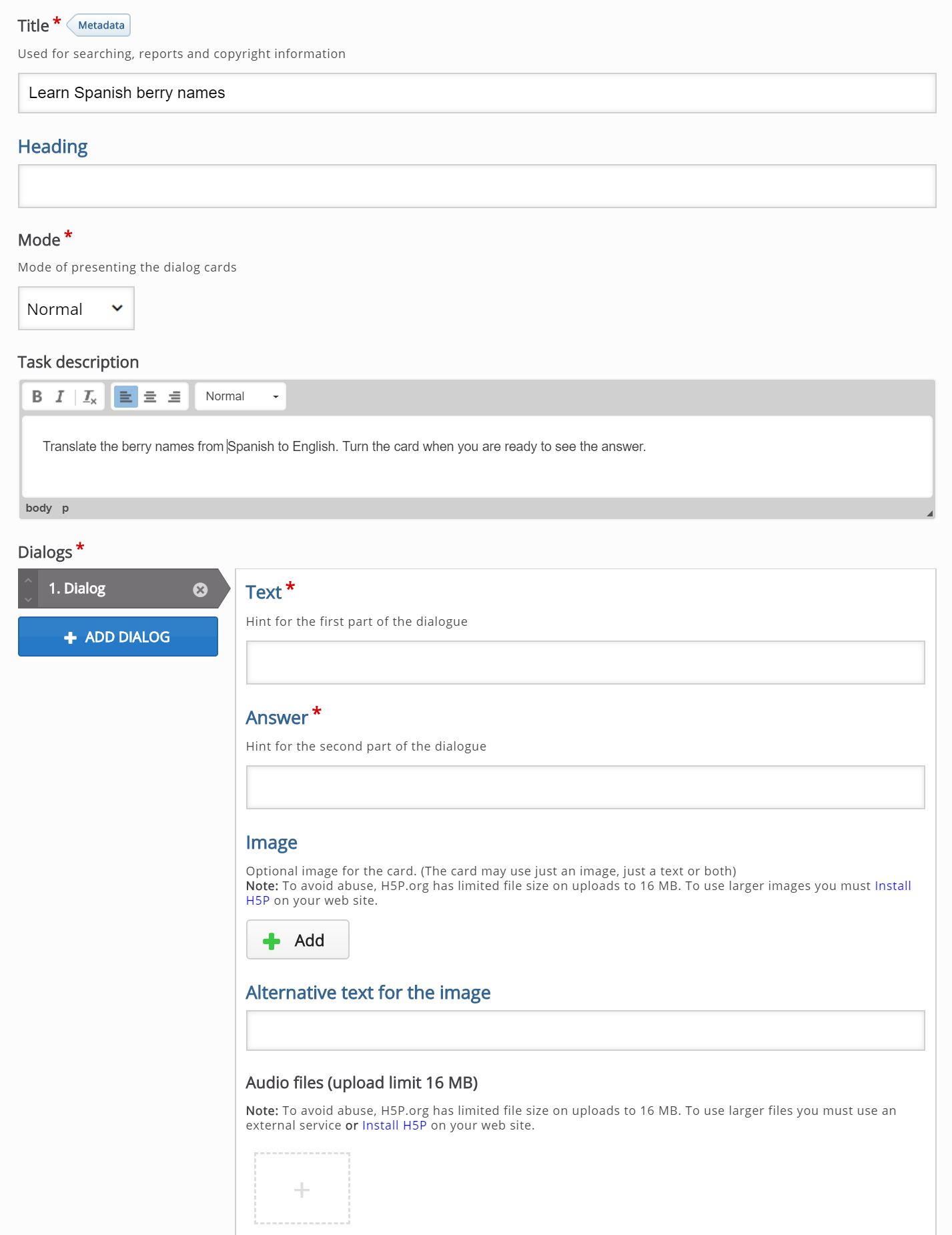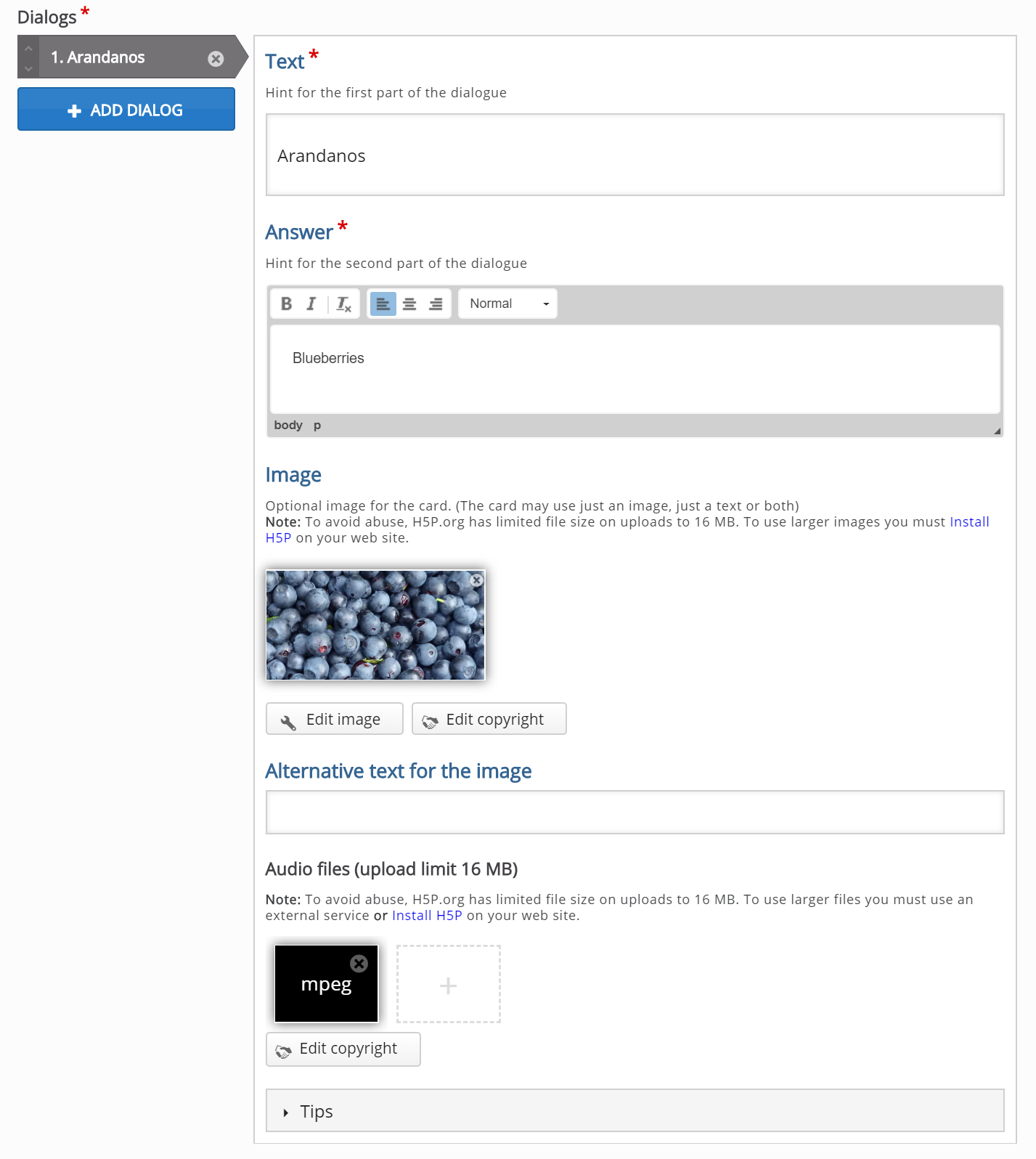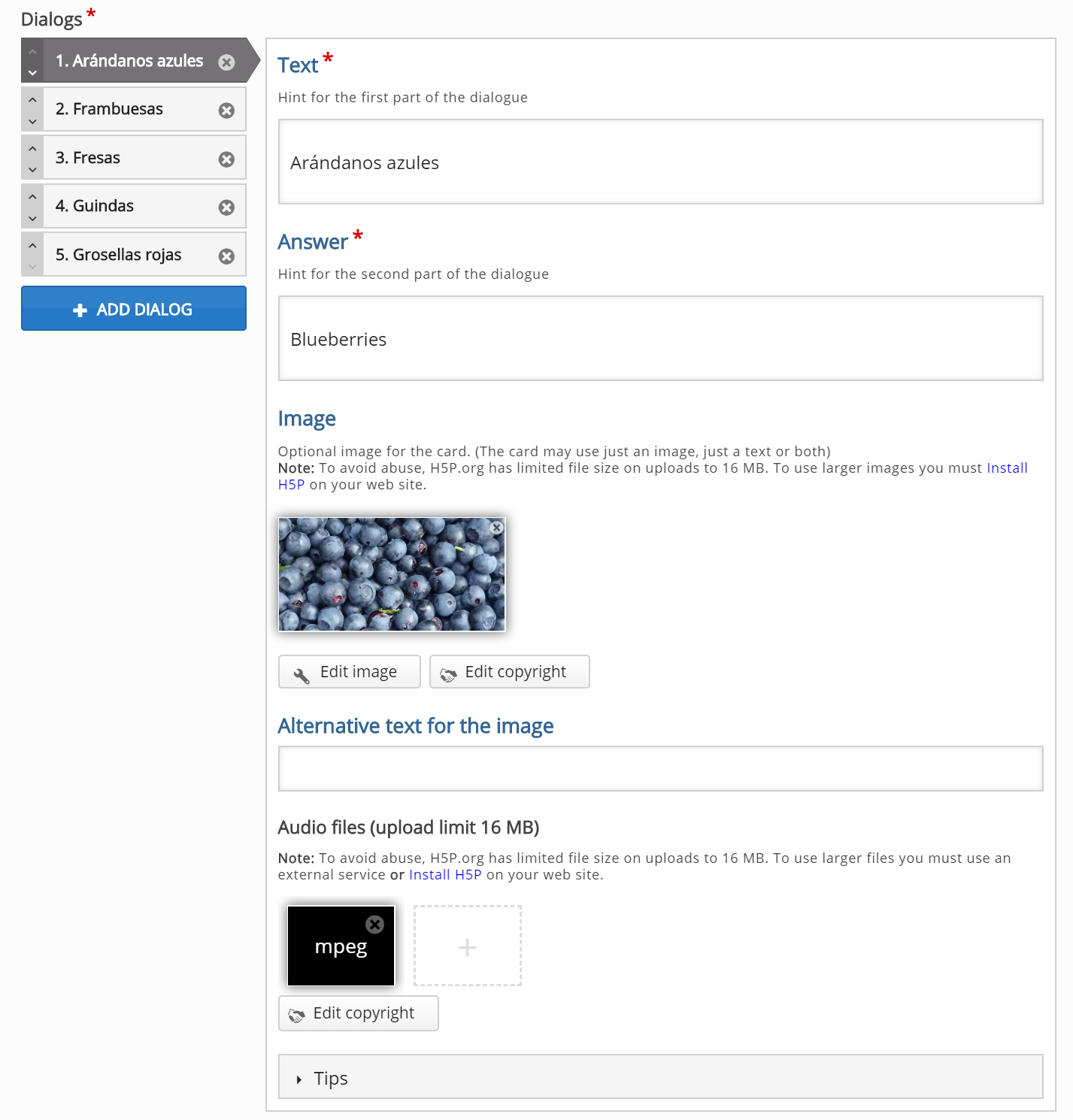Dialog Cards
Dialog Cards enable you to create a set of cards with corresponding words or expressions on either side of the cards.
Dialog cards can be used to help learners memorize words, expressions or sentences. They provide a prompt on one side of the card, and a corresponding answer on the other side.
Dialog cards are often used in language learning for drilling words and expressions.
Accessing H5P in Canvas
Clicking on that menu item will open a pop-up showing your H5P library. From here, you will have the option to either insert previously created content or create something new.

Select the Add Content option. A search bar will appear.
Creating Dialog cards
The Dialog cards editor should now appear.

The Dialog cards editor consists of a Title, a Heading, a Mode, a Task description and a set of Dialogs.
Title

Heading
Task description
In this field you can give instructions to the learner.

Dialogs
Press the Add dialog button to add the card.

You should now have something like this:

On this first card insert the first text in the Text field.
In the Answer field, provide the correct answer.
Insert an image under Image field and an audio file under Audio files. (Image and Audio files are optional.)


Adding more cards
We can add more cards by following the same procedure as above.
Finishing up
By now you should have ended up with something like this:

Save and Insert when you're satisfied to view your final set of Dialog cards.